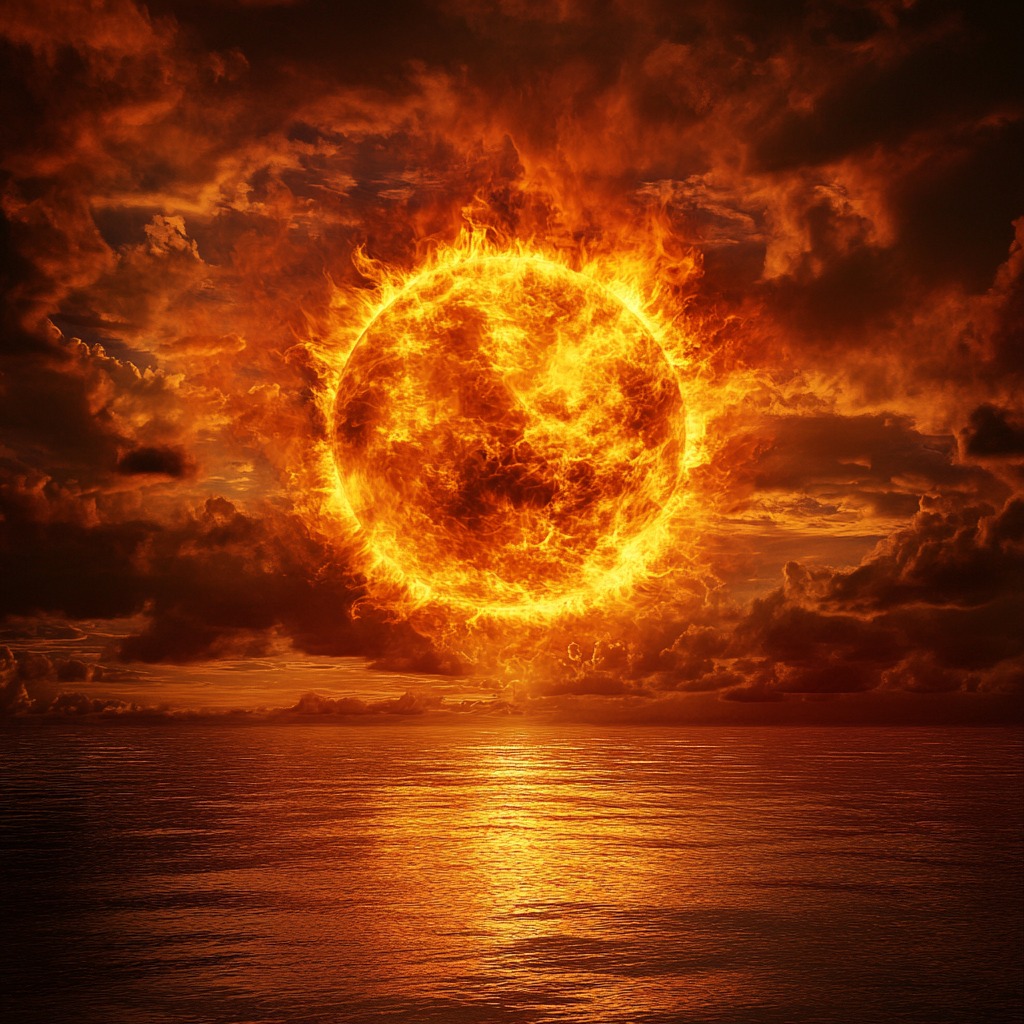5 to 7 Billion Years from Now: The Red Giant Phase
- The Sun Expands: As the Sun exhausts its hydrogen and helium, it will expand into a red giant, growing 256 times its current size.
- Sweeping Through the Inner Solar System: Approximately 5 million years after becoming a red giant, the Sun will engulf Mercury and Venus as its outer layers reach further into the solar system.
- Extreme Heat: Earth will experience unprecedented temperatures, depleting carbon dioxide from the atmosphere.
Plant and Animal Extinction
- Loss of Carbon Dioxide: Without carbon dioxide, plants—the primary producers of oxygen—will perish.
- Oxygen Depletion: As plants die, oxygen levels will plummet, killing mammals and birds.
- Insect Extinction: Rising temperatures will eventually wipe out all insects.
- Microbial Survival: Only microorganisms will endure the harsh conditions for a limited time.
The Final Survivors
- Tardigrades: These resilient creatures, capable of withstanding extreme radiation and heat, will be the last to survive Earth’s hostile environment.
Earth’s Surface Transforms
- Cataclysmic Climate Changes: Intense heat will trigger excessive rains and violent winds, leading to significant planetary destruction.
- Boiling Surface: Temperatures on Earth’s surface will exceed 2,400 K (2,130 °C or 3,860 °F), causing the oceans to evaporate.
- Loss of Atmosphere: Earth’s atmosphere will be stripped away, leaving a barren, lifeless surface covered in molten lava and metal oxides.
- End of Tectonic Activity: With the disappearance of water, tectonic plates will cease to move.
7.6 Billion Years: Earth Engulfed by the Red Giant
- Final Demise: Earth and the Moon will likely be swallowed by the expanding red giant Sun.
- A New Habitable Zone: The habitable zone in the solar system will shift outward to the Kuiper Belt. Icy worlds beyond Neptune will warm, with liquid water forming on their surfaces.
Potential New Homes
- Triton and Eris: Neptune’s moon Triton and the dwarf planet Eris could become potential habitats for humans. Liquid water and milder temperatures in the outer solar system would allow for colonies to thrive.
Far Future: 1 Quadrillion Years
- The Sun’s Final Form: The Sun will eventually become a black dwarf—a cold, Earth-sized remnant of its former self. The once-radiant star that sustained life on Earth will fade into a lifeless, dark object.
This timeline highlights the eventual demise of Earth and the solar system’s transformation. It serves as a reminder of the fleeting nature of our planet and the adaptability humanity might require to ensure survival far into the future.


